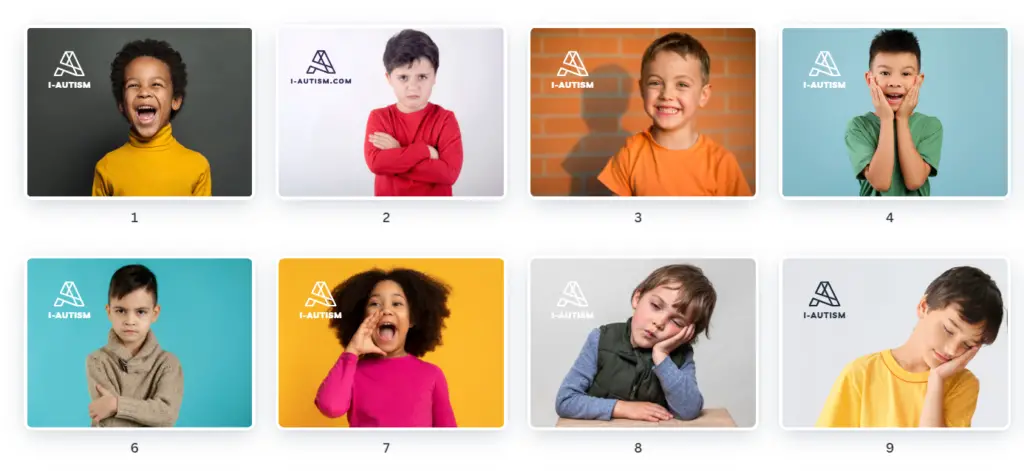Children with ASD often find visual aids to be invaluable in their learning journey. These visuals act as dependable guides in a world that can be overwhelming with auditory and textual instructions. By using images, we communicate in a universal language that goes beyond speech and text, connecting directly with the visual realm where many children with autism experience comfort and understanding.
Pictures of Action Verbs | for Non-Verbal Children
Understanding and Responding to Action Images
- Begin with a Selection of Images: Start with a curated set of clear, simple pictures depicting everyday actions such as eating, drinking, sitting, or standing. Consider the child’s daily routines and interests in your selection.
- Introduce Images Slowly: Display one image at a time to the child, clearly and calmly naming the action. Use a neutral background to eliminate distractions and focus the child’s attention on the image.
- Pair Actions with Real-Life Activities: Demonstrate the action depicted in the image. For instance, if you are using an image of ‘drinking,’ perform the action with a glass of water. This real-life connection reinforces understanding and memory.
- Encourage Non-Verbal Responses: Guide the child to point or gaze towards the action they wish to communicate. Acknowledge their efforts emphatically, creating a positive reinforcement loop.
- Use Technology Wisely: Consider using a tablet or digital device to display the images if it enhances engagement. Some children may respond better to interactive screens.
Pictures of Action Verbs | For Children With Emerging Verbal Skills |
Building Vocabulary and Simple Phrase Construction
- Expand the Image Library: As comprehension grows, introduce more diverse actions and create combinations (e.g., ‘running fast,’ ‘jumping high’). This broadens the child’s vocabulary and conceptual understanding.
- From Recognition to Expression: Encourage the child to name the actions in the images themselves. If they struggle to articulate the word, prompt them gently, and offer ample time for response.
- Create Simple Sentences: Use images to form basic sentences. “I am eating,” or “She is running.” Visual cards can be arranged to help construct the sentence, promoting the connection between spoken language and action.
- Engage in Role-Playing Games: Utilize the images to set up scenarios that the child can act out, either alone or with peers. This method promotes understanding of verbs in a fun and interactive way, enhancing both language and social skills.
Pictures of Action Verbs | For Children With Established Verbal Skills
Facilitating Complex Language Use and Social Narratives
- Incorporate Abstract Actions: To challenge and engage children further, introduce abstract actions like ‘thinking,’ ‘dreaming,’ or ‘feeling happy.’ Discuss these concepts and relate them to personal experiences.
- Storytelling with Action Images: Encourage the child to create stories using a sequence of action images. This activity not only hones their language skills but also stimulates imagination and empathy.
- Group Activities for Social Learning: Use action images in group settings to promote social interaction. For example, a game where a child picks an action image and others guess what it is can foster turn-taking, patience, and observational skills.
- Feedback and Reflection: Regularly discuss with the child what they’ve learned from the images. Ask open-ended questions about the actions and their implications in daily life, encouraging critical thinking and self-expression.
Our ultimate objective in utilizing action verb images isn’t just to enhance communication; it’s to unlock a world where children with ASD find their voice, express their thoughts, and actively participate in the tapestry of daily life. By tailoring this approach to meet each child’s unique developmental needs, we not only affirm their potential but catalyze their journey towards independence and self-advocacy.



